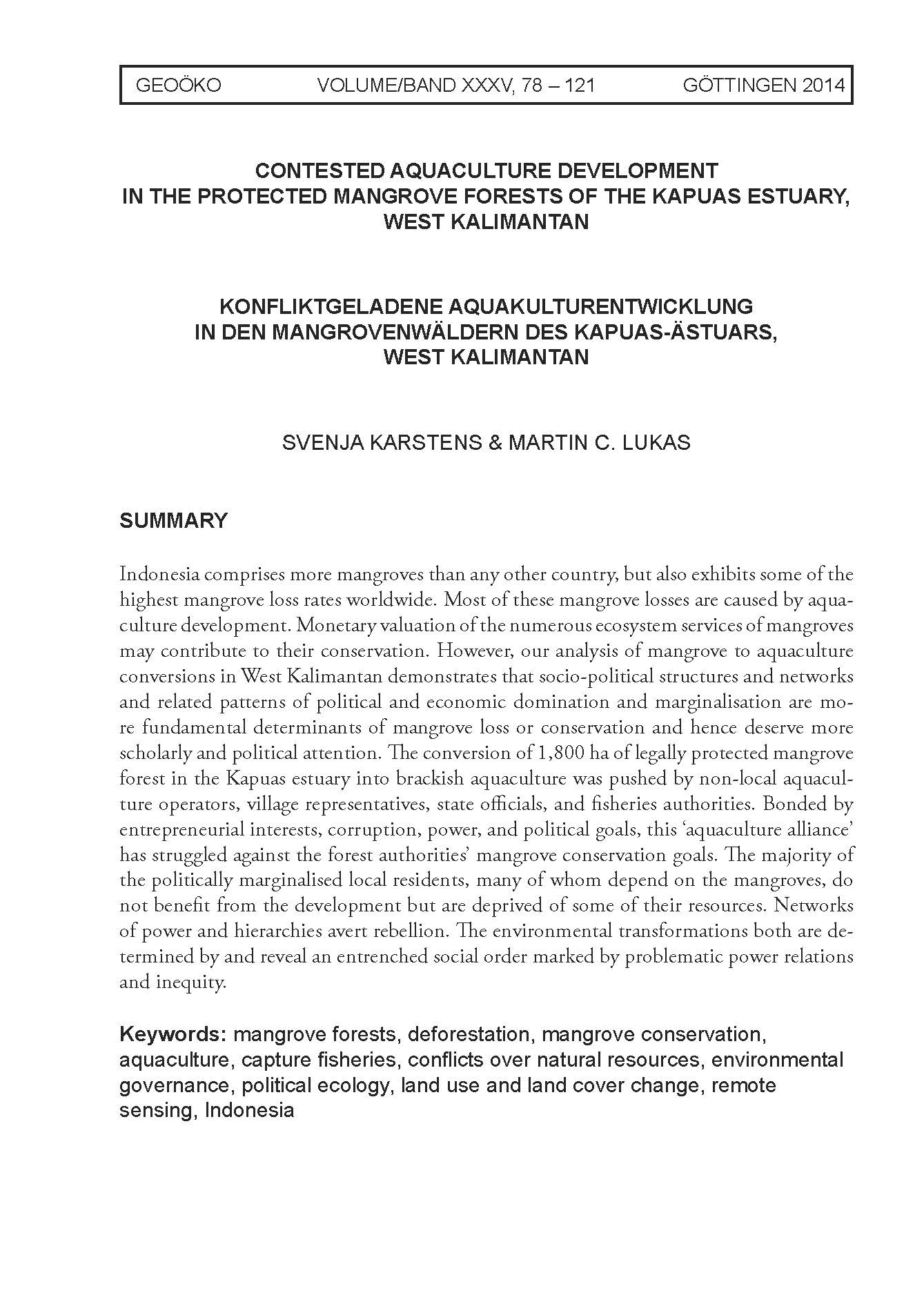Satellite images for detection of coastal landuse and coastline change in Mueang Prachuap Khiri Khan district, Thailand during 1987-2009
Combining fish and rice production.CAB Reviews
The combination of rice and fish production into one system is considered to be an efficient means of agricultural land use for small-scale farmers. In some of these so-called rice-fish systems rice and fish are grown in the same field, at the same time; in other systems they are grown in the same field, but in rotation. Rice-fish farmers pay most attention to the maximization of the rice yield. This is a logical choice because the rice field is not the most ideal environment for fish production as the rice crop shades the field floodwater, thus hampering aquatic primary production.
Contested aquaculture development in the protected mangrove forests of the Kapuas estuary, West Kalimantan
Indonesia comprises more mangroves than any other country, but also exhibits some of the highest mangrove loss rates worldwide. Most of these mangrove losses are caused by aquaculture development. Monetary valuation of the numerous ecosystem services of mangroves may contribute to their conservation.
The gender gap between water management and water users: evidence from Southwest Bangladesh
Water management in Bangladesh is guided by an intended integrated and inclusive approach enshrined in government legislation since the late 1990s. Based on qualitative and quantitative data collected in the coastal zone, we assess the implementation of these policies with regard to women water uses. First, the analysis of reproductive and productive roles of women establishes that men have a significant role to play in domestic supply, and women use water extensively for small-scale agriculture and aquaculture, the scope of which has been underestimated.
Potential Business Opportunities from Saline Water and Salt-affected Land Resources
Report on Potential Business Opportunities from Saline Water and Salt-affected Land Resources




